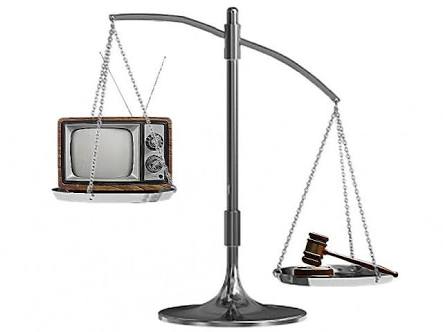Tanvi Kapde, Student, 5th Year, Kirit P. Mehta School of Law, NMIMS University Mumbai
__________________________________________________________________________________________________
In recent times, the freedom of press and speech used by the media has turned into a term now popularly known as the ‘Media Trial’. It would essentially mean the intervention of media into the under-trial cases. Freedom of speech and expression is incorporated under Article 19(1) of the Constitution of India, which allows circulation of one’s views by word of mouth or in writing or through audio-visual networks. Every citizen of the country is the right to exercise this right and express his or her view, however even this fundamental right provided by the constitution has its restrictions on the grounds of sovereignty and integrity of the country, security of the state, friendly relation with foreign state, public order, decency, or morality or in relations to contempt of court, defamation or incitement to an offence as placed in Art:19 (2) of the Constitution of India.
The evolution of Media Trials can be overserved throughout the 20th century, from the renowned case of O.J. Simpson [1] in the 1995 to the recent case of Sushant Singh Rajput and the Sheena Bora Murder [2] case. In these kinds of cases, the media had promoted the cases and while doing so, it influenced the minds of the viewers even before the verdict of the court. These cases raise questions about the matter of the media trails and the ethics of journalism during such cases. In the criminal justice system, the basic rule of law is that the accused needs to be proven guilty via the procedure of law and not the public views and emotions. The judges and the judicial system of India is not oblivious to the emotions displayed by the public about a certain trial, while being aware of the public opinion about a case, how can a judge be expected to provide a fair and just trial? The print and electronic media have transitioned into a ruthless competition of tainting and defaming the accused, to what is now known as ‘aggressive journalism’. For example, talking about the Sushant Singh Rajput case, the case erupted into a massive outrage over social media and the accused blaming began at a very large scale. Media’s adducing of ‘evidence’ begins very early, mostly even before the person who will eventually preside over the trial even takes cognizance of the offence, and secondly that the media is not bound by the traditional rules of evidence which regulate what material can, and cannot be used to convict an accused. Majority of the cases that were reported by the media are reported unsensitively and without doing their due diligence. In the case of Zahira Habibullah Sheikh v. State of Gujarat [3], the Supreme Court explained that a “fair trial obviously would mean a trial before an impartial Judge, a fair prosecutor and atmosphere of judicial calm. Fair trial means a trial in which bias or prejudice for or against the accused, the witnesses, or the cause which is being tried is eliminated.” Due to the media trials, the accused, the victims and the witnesses suffer from invasion of their privacy, from having every aspect of their role in the case analyzed or rather judged by every person in the country via social media. Social Media is another development that has affected Media Trials. With access to internet, not just media houses but public at large have the ability to comment on cases and defame an accused.
In the recent order by the Bombay High Court over the Sushant Singh Rajput case[4], a list of guidelines was laid down, they were as follows:
- That any alleged confession by accused, when not admissible before, is portrayed before the public as admissible evidence, should be avoided;
- Leaking of any sensitive information, reconstructing of crime scenes, etc should be avoided;
- Suggesting that a suicide was a result of a weak character should be avoided;
- Investigating authorities are required to keep secrecy about the investigation
In addition to these guidelines, the court provided a non-exhaustive list of cases that could hamper the trials. Every citizen of the country has multiple fundamental rights, including freedom of press, however even those have certain restrictions. Especially when the media trials tend to create a prejudice in the minds of the viewers which is not justifiable. It is necessary to uphold the rule of law and mandate the interference of the media in the matters of the judiciary.
Disclaimer : All rights reserved to Lexstructor Legal News and Publication
_______________________________________________________
References
[1] The People of the State of California v. Orenthal James Simpson, BA097211.
[2] Pratim Alias Peter Mukherjea vs Union Of India And Anr, 4400 OF 2017.
[3] Zahira Habibullah Sheikh v. State of Gujarat, [(2004) 4 SCC 158].
[4] Public Interest Litigation (ST) No. 92252 of 2020.


Leave a comment